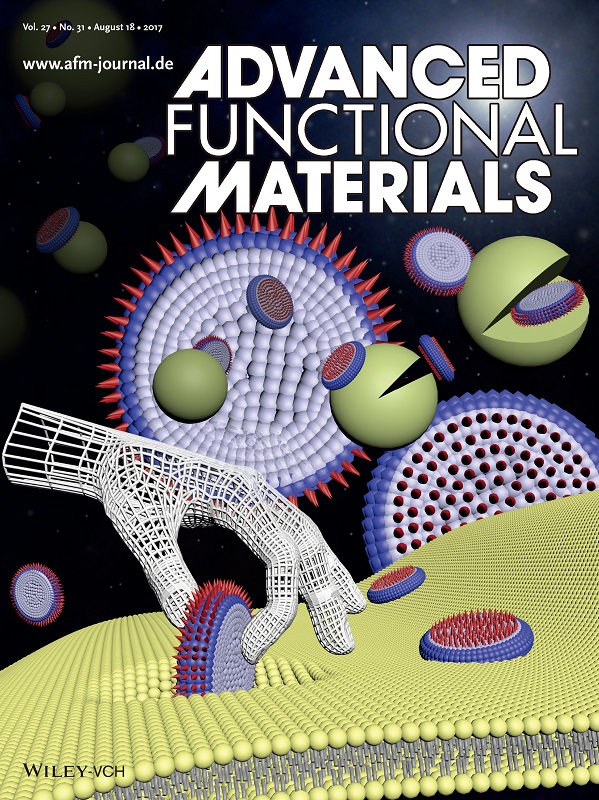2017年5月,我实验室汪小又博士在功能材料领域权威学术杂志发表团队研究论文Anisotropy in shape and ligand-conjugation of hybrid nanoparticulates manipulates the mode of bio-nano interaction and its outcome,首次同时考察了形态各向异性、配体修饰各向异性和细胞吞噬功能对纳米-生物相互作用的影响,为纳米技术调控纳米-生物相互作用打下了良好的基础。8月18日,论文以封面文章的形式予以刊出。

Abstract
In an attempt to manipulate the biological features of nanomaterials via both anisotropic shape and ligand modification, four types of nanoparticulates with good morphological stability are designed and engineered, including hybrid nanospheres, nanodiscs, and nanodiscs with edge modification or plane modification of octa-arginine (R8) sequence. It is found that the R8 modification anisotropy can trigger huge differences in the endocytosis, intracellular trafficking, and even tissue penetration of nanoparticulates. From plane modification to edge modification of R8, the maximum increase in cell uptake is up to 17-fold, which is much more significant than shape anisotropy alone. On the other hand, six types of different cell lines are investigated to simulate biological microenvironment. It is demonstrated that the maximum difference in cell uptake among six cell lines is 12-fold. Three main driving forces are found to contribute to such bio-nano interactions. Based on the findings of this study, it seems possible to manipulate the biointeraction mode of nanomaterials and its output by regulating their anisotropy in both shape and ligand modification.
Authors:Xiaoyou Wang, Li Lin, Renfa Liu, Min Chen, Binlong Chen, Bo He, Bing He, Xiaolong Liang, Wenbing Dai, Hua Zhang, Xueqing Wang, Yiguang Wang, Zhifei Dai*, Qiang Zhang*
Published in Advance Functional Materials, May, 2017
See full text: http://onlinelibrary.wiley.com/doi/10.1002/adfm.201700406/epdf
